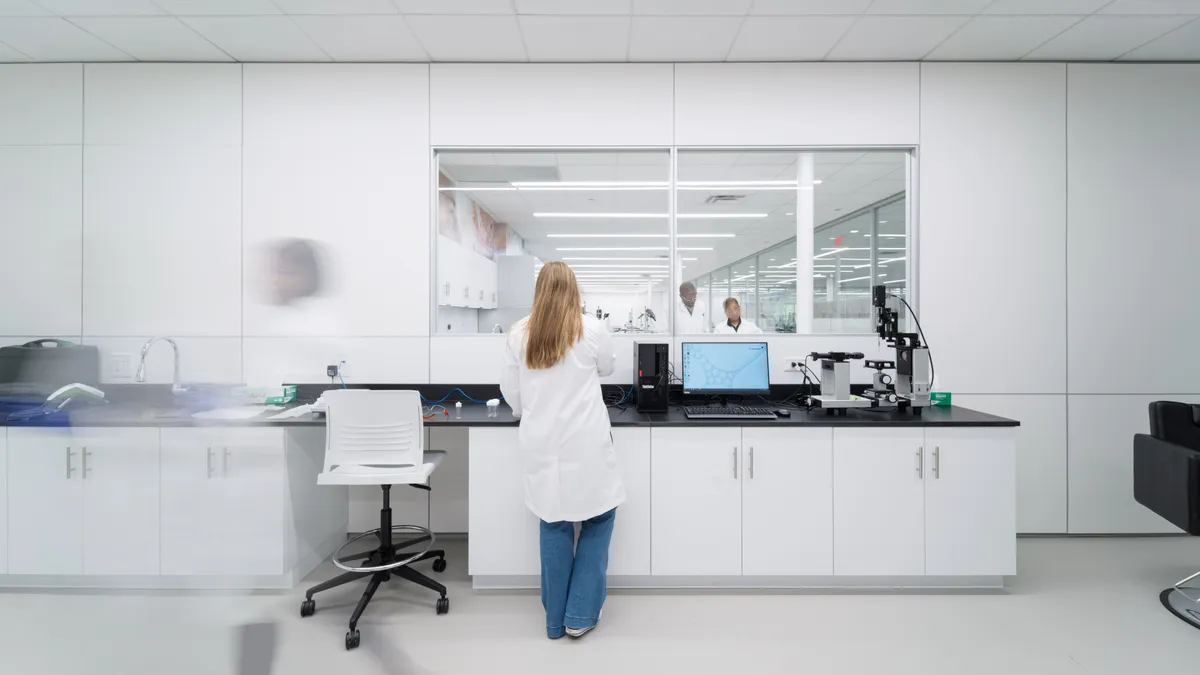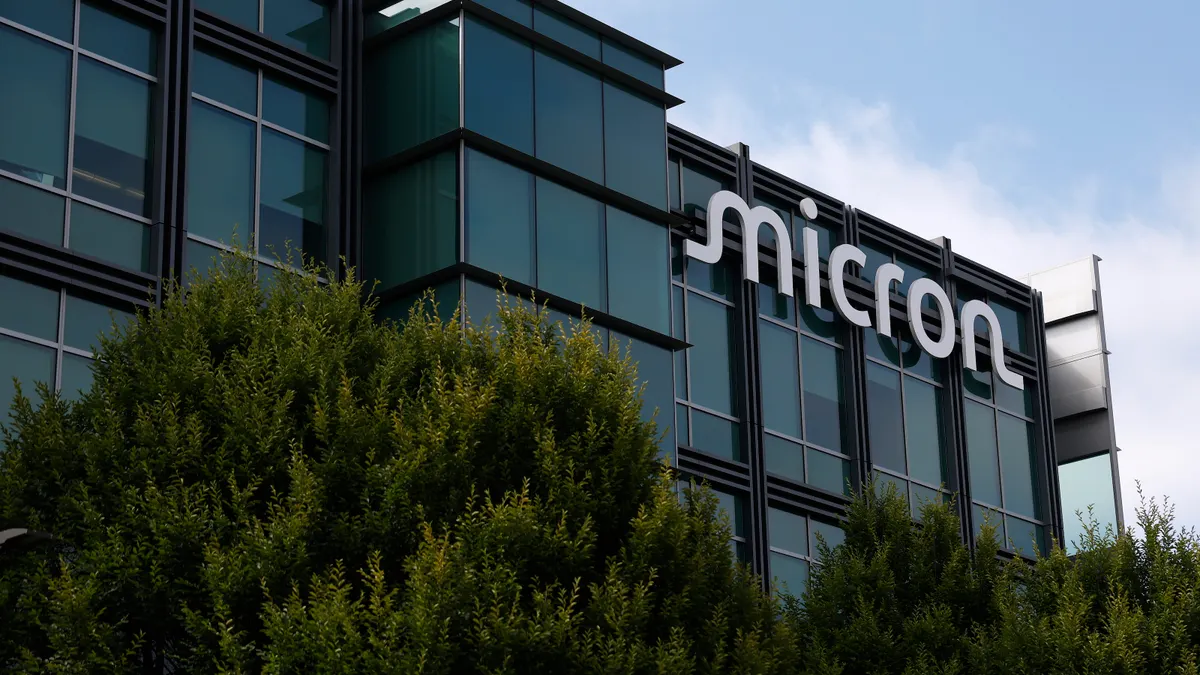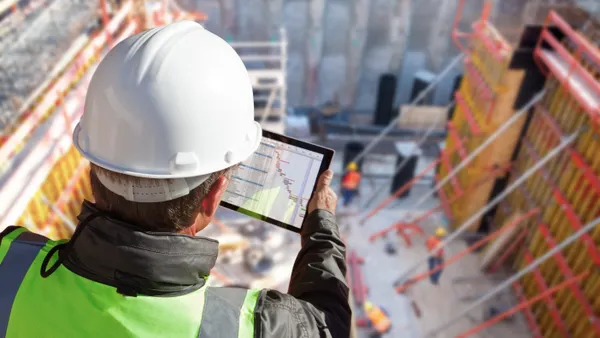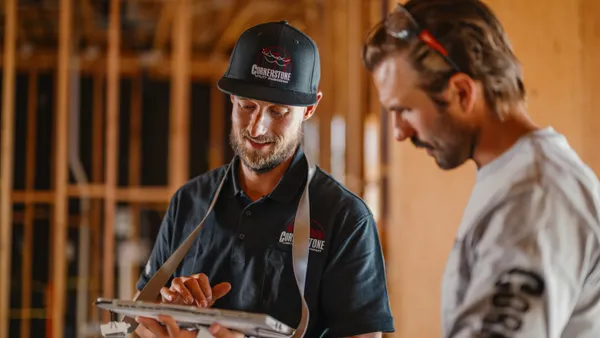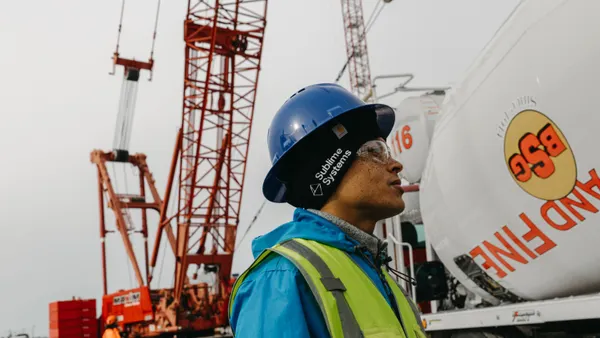Science is always evolving, but many scientific workplaces are stuck in the past.
According to a recent report from CBRE titled, “The Next Generation of the Scientific Workplace,” lab and research facilities haven’t changed much in the last 50 years. (That’s around when the first floppy disk was released, for context.)
Paul Janssenswillen, head of Scientific Projects at CBRE and the report’s co-author says updating old lab designs involves thinking ahead. “You want future-proof space that you can change as organizations change, technologies change and processes change — something that’s easily adaptable.”
Janssenswillen takes us back to the original design of scientific workplaces. “There are two elements to (research and development) R+D facilities,” he says.
“There’s the laboratory, which we all know is the place that houses equipment…to generate data to back up theories and explorations. The other part is where all of the time is really spent, which is just office space.”
That was then, and (in many cases) now.
But the CBRE report predicts major changes to scientific workplaces in the coming decades.
Increased adoption of cloud-based computing, AI cobots (collaborative robots) and digital-twin technology (a virtual model of a real system) will allow experiments to be controlled from anywhere on a network.
“At some point, you don’t need to have the laboratory producing data in the same place as the scientists,” Janssenswillen says. In the future, labs and offices won’t need to be located on the same campus.
In the near term though, “modular and agile workplace solutions are cornerstones in the move to adapt to evolving team needs within a matter of days,” says the report.
This more adaptable and flexible “next normal” will spark more innovation across disciplines as scientists come together in workplaces that encourage creativity and collaboration.
Traditional science labs versus adaptable workplace solutions
Traditional labs were built for focused research and functional needs. Solo scientists each worked on desktop experiments. And some scientific workplaces still reflect this repetitive approach to design.
“Some companies are still very conservative (with) individual prep spaces for individual biologists or individual fume hoods for individual chemists,” Janssenswillen explains.
According to the CBRE report though, modular laboratories are “designed to be adaptable and reconfigurable to accommodate a variety of research needs.” This is something Saquib Butt knows all about. As the senior vice president of infrastructure and assets at SmartLabs, he sees the benefit of prefabricated, modular lab spaces every day.
SmartLabs’ mission is to accelerate the pace of science through a variety of services for bespoke lab space, and they consolidate interior construction and off-site manufactured components like walls, doors and cabinetry. “If you take all of that and you prefabricate that in a factory and then basically bring it to the site and deploy that in a day or less than a day, it's a big gain,” he says.
Even without breakthroughs in AI and cloud computing, the current lab model benefits from a modular construction approach. Imagine a company is doing research on cell gene therapy in a bio lab and it doesn’t shake out. With venture capital funding burning by the minute, they need to pivot into chemistry research.
“They want to change their workflows and their science within that space now, without going through full-blown design and construction. We’ll take the existing modular system out and reconfigure that the way that they want which is a big benefit for these companies because they don't have to shut down their existing research and look for a new space to design and build.”
The same is true in the world of academia. Whether it’s a chem lab or an education lab (what Butt would call a dry lab), using adaptable interiors makes a lot of sense to educational institutions so they can quickly and easily meet changing needs.
“We can basically show them how a life-science infrastructure is designed in a way that is flexible and meets their demands. And the benefits of the reconfiguration using this modular system is definitely a plus for them.”

Make a connection
Collaboration is also an increasingly important element of modern scientific workplaces.
“The year of the generalist has disappeared,” says Janssenswillen. “Scientists (have) deeper knowledge in a narrower field, so their need to integrate with other technologists, engineering and other scientists becomes even greater. The need for collaboration and multidisciplinary teams becomes more important.”
As a result, the report found that “transitional spaces have expanded, ranging from break rooms and lounges to other places where researchers can both relax and collaborate outside the laboratory proper.”
Here, people make organic connections. As Janssenswillen puts it, “no technology will replace face-to-face communication.”
In fact, the report found U.S. patent citations dropped as remote work increased and fewer in-person meetings were held. Even casual encounters with colleagues in person can encourage innovation.
The report also found that positive emotions from well-designed, emotive environments, “not only elevates individual performance, but also propels organizations to reach peak performance.”
Reducing carbon and lead times
As technology advances, modular labs mean equipment is easily reconfigurable and can adapt to various experiments, as well as other evolving needs, preventing the need for as much renovation, according to the report.
This includes sustainability goals. According to Butt, a modular approach to lab construction offers a 20% carbon reduction over a conventional process. “There's a big green component of this modular system that I think people either don't know or they take for granted,” says Butt. "It's all recyclable.”
Ultimately, as the very nature of lab spaces changes, the need for flexibility remains.
According to the report, if space is flexible by design, it will “enable teams to construct new infrastructure and update old systems with speed and efficiency” — whatever the future might hold.

